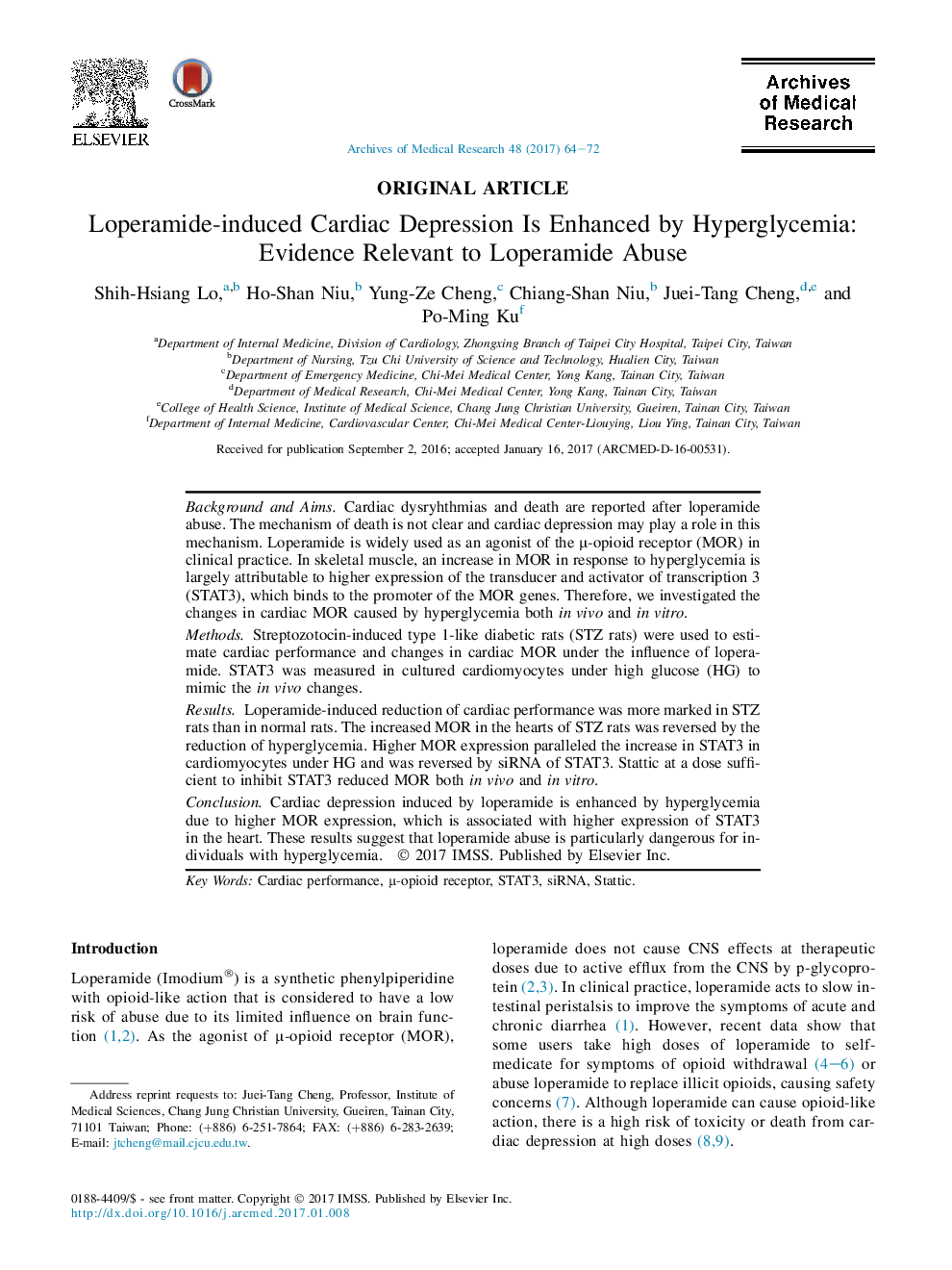| Article ID | Journal | Published Year | Pages | File Type |
|---|---|---|---|---|
| 5677201 | Archives of Medical Research | 2017 | 9 Pages |
Background and AimsCardiac dysryhthmias and death are reported after loperamide abuse. The mechanism of death is not clear and cardiac depression may play a role in this mechanism. Loperamide is widely used as an agonist of the μ-opioid receptor (MOR) in clinical practice. In skeletal muscle, an increase in MOR in response to hyperglycemia is largely attributable to higher expression of the transducer and activator of transcription 3 (STAT3), which binds to the promoter of the MOR genes. Therefore, we investigated the changes in cardiac MOR caused by hyperglycemia both in vivo and in vitro.MethodsStreptozotocin-induced type 1-like diabetic rats (STZ rats) were used to estimate cardiac performance and changes in cardiac MOR under the influence of loperamide. STAT3 was measured in cultured cardiomyocytes under high glucose (HG) to mimic the in vivo changes.ResultsLoperamide-induced reduction of cardiac performance was more marked in STZ rats than in normal rats. The increased MOR in the hearts of STZ rats was reversed by the reduction of hyperglycemia. Higher MOR expression paralleled the increase in STAT3 in cardiomyocytes under HG and was reversed by siRNA of STAT3. Stattic at a dose sufficient to inhibit STAT3 reduced MOR both in vivo and in vitro.ConclusionCardiac depression induced by loperamide is enhanced by hyperglycemia due to higher MOR expression, which is associated with higher expression of STAT3 in the heart. These results suggest that loperamide abuse is particularly dangerous for individuals with hyperglycemia.
